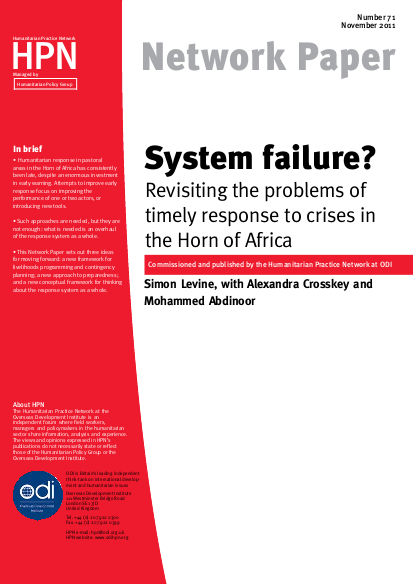
Humanitarian response in pastoral areas in the Horn of Africa has consistently been late. An enormous investment in early warning over a number of years has brought great improvements: mass human fatalities have become rarer in the past 25 years. However, humanitarian response now aims to prevent not only large-scale loss of life, but also the destruction of livelihoods. Our response has not kept up with this ambition. Evaluations have shown that interventions to protect and support people’s livelihoods have consistently – if not invariably – arrived too late to achieve their intended impact.1 The fact that response has most consistently been late in pastoral areas should be striking for two reasons: first, because food security crises in the pastoral areas of the Horn are so regular; and second, because droughts in pastoral areas are the slowest-onset crises imaginable. (A true drought is usually the result of more than two successive rain failures.) So, why is response least timely precisely where we have a) most warning and b) the most practice? These questions have been asked for more than 30 years.
This Network Paper examines how one project tried to ask the same questions again, its successes and failures and its attempt at a fresh explanation of the fact that so many apparently simple problems have proved so intractable. It sets out three ideas for moving forward.
• A new framework for thinking about (and doing) liveli- hoods programming and contingency planning. • A new way of thinking about (and improving) preparedness. • A new conceptual framework for thinking about the response system as a whole. The lessons documented here grow out of work in pastoral areas in the Horn, but none of them relates specifically to pastoral areas, nor do they apply only to the Horn of Africa. They have wide applicability wherever people are thinking about how to support fragile livelihoods during crises.